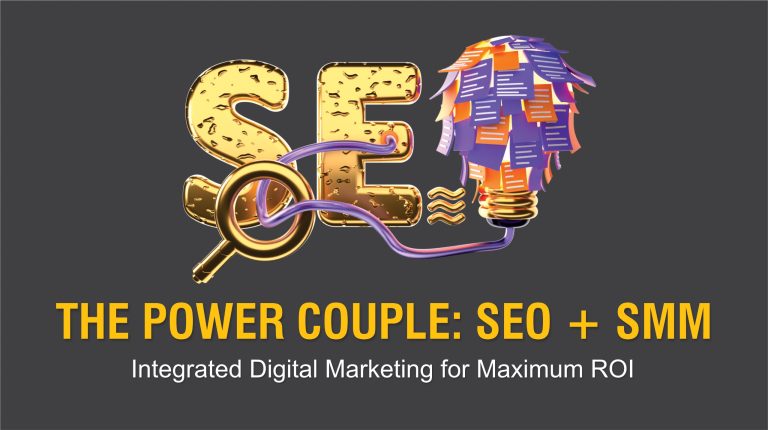Stop treating SEO and social media as separate channels. They are two halves of the same engine. Here’s how to stop wasting effort in silos and start creating a compounding growth loop.
The Most Common Marketing Mistake
In my 15+ years in digital marketing, I’ve seen businesses make the same costly mistake over and over: They treat their marketing in silos.
They have an “SEO person” who lives in Google Analytics and Ahrefs, focusing on keywords and backlinks. Then, they have a “social media person” who lives on Facebook, Instagram and LinkedIn, focusing on engagement and follower counts. They rarely talk, and their strategies almost never align.
Your SEO and Social Media are not just related; they are symbiotic.
When you run them as separate strategies, you’re getting 50% of the results. When you integrate them, you don’t just add their power—you multiply it. You create a feedback loop where each channel makes the other one stronger.
As an expert in both SEO and Social Media Marketing (SMM), I’m going to show you exactly how to build this integrated ecosystem for maximum ROI.
Push & Pull
Think of SEO as your “pull” strategy. You create valuable content that answers a user’s question precisely when they search for it on Google. It’s powerful, but it’s a long game. It needs a kickstart.
Think of SMM as your “push” strategy. You actively push your content in front of a relevant audience, generating immediate traffic, and starting a conversation now.
How to Integrate Them:
Your billion-dollar, SEO-optimized blog post is useless if no one reads it. The moment you hit “publish” on that post, your social media strategy should click into high gear.
- Share your new post across all your relevant social channels (LinkedIn, Facebook, X, etc.). This drives an initial wave of traffic, which is a crucial signal to Google. It shows that your content is fresh, relevant, and engaging, which can significantly speed up indexing and improve initial rankings.
- While Google’s direct use of “social signals” (likes, shares) as a ranking factor is heavily debated, the indirect benefits are undeniable. More shares lead to more visibility. More visibility leads to more people seeing your content. More people seeing it means a higher chance that another blogger, journalist, or business will link back to it. That is how social media directly builds high-quality backlinks—the lifeblood of SEO.
Don’t just “drop a link.” Create a 30-second video for Instagram Reels summarizing the post. Pull out 3 key stats for a LinkedIn carousel. Ask a provocative question on X (Twitter) that your post answers. Each social post should be a native “trailer” for your main content.
Use Social Listening to Win at SEO and PPC
This is the most under-utilized strategy, and it’s my favorite. Marketers spend thousands on complex keyword research tools, but they ignore the free focus group they have access to 24/7: their social media audience.
Your customers and prospects are on social media right now, telling you exactly what they want and the exact language they use to describe their problems.
Go into Reddit forums, Facebook Groups, and the comment sections of your industry’s influencers. Look for the pain points. What questions do people keep asking?
- If you see “How do I…” or “I’m struggling with…” or “What’s the best tool for…”—those are your next blog post titles.
- This isn’t keyword guessing; this is keyword validation. You’re finding proven demand before you ever write a word.
This is my secret weapon for Google Ads. The language your customers use in social media comments is the best ad copy you will ever find.
If you sell shoes and your customers on Instagram keep saying they love them because they “feel like walking on clouds,” your Google Ad headline should not be “High-Quality Leather Footwear.” It should be “Shoes So Comfortable, They Feel Like Clouds.”
You are matching your ad copy directly to the user’s internal monologue, which dramatically increases click-through rates (CTR) and ad quality scores.
Using Social Media to Build Google’s E-A-T
In recent years, Google has made it clear it doesn’t want to rank faceless, anonymous websites. It wants to rank content from legitimate experts and trusted businesses. This is called E-A-T: Expertise, Authoritativeness, and Trustworthiness.
Your website’s “About Us” page can claim you’re an expert. Your social media presence proves it.
- When Google’s algorithm (or a human rater) tries to determine if “Muhammad Abid Ayub” is a real expert, what will it find? A strong, active LinkedIn profile where you share insights on SEO and SMM builds immense authority. It validates the “author” of the content on your website.
- A strong social presence builds a brand. People stop searching for “Digital Marketing Expert in —–” and start searching for “Muhammad Abid Ayub” or “iTechno” These “branded searches” are one of the most powerful trust signals you can send to Google. It tells Google that you are a real, recognized entity, which boosts your authority across your entire domain.
- An active social media presence, linked from your website (and vice-versa), shows you are an active, breathing business that engages with its customers. This builds the “Trustworthiness” (the ‘T’ in E-A-T) that a static, rarely-updated website simply can’t.
Stop Running in Silos
Your SEO strategy shouldn’t live on an island. Your social media strategy shouldn’t be just for show.
- Use social media to push your content, listen to your audience, and build your brand.
- Use the insights from social to fuel your Google Ads and SEO content strategy.
- Use your SEO content as the high-value “home base” that your social channels drive traffic to.
When you connect these two powerful engines, they stop being simple marketing channels and become a single, self-perpetuating system for growth.

